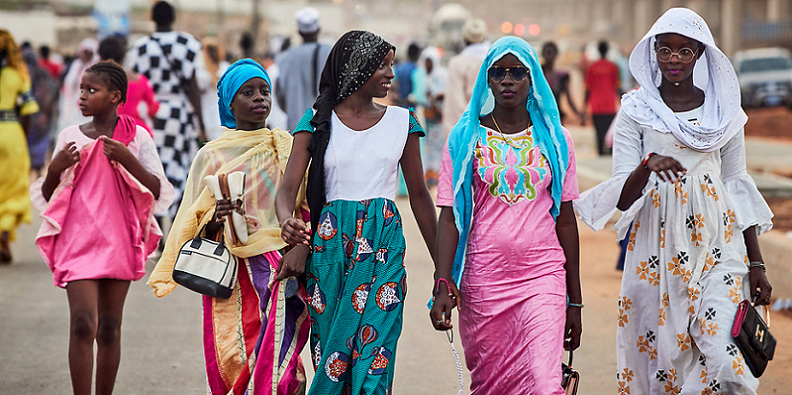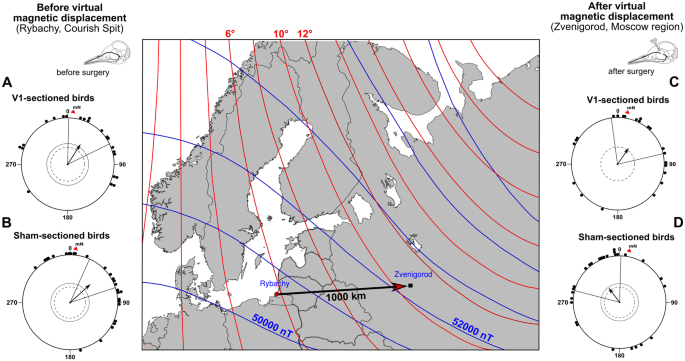Discover Pandipedia
Pandipedia is the world's first encyclopaedia of machine generated content approved by humans. You can contribute by simply searching and clicking/tapping on "Add To Pandipedia" in the answer you like. Learn More
Expand the world's knowledge as you search and help others. Go you!

Climate plays a crucial role in athletic performance, impacting various physiological and psychological parameters. This report examines how temperature, humidity, and other climate factors can enhance or hinder athletic abilities based on recent findings.
Temperature Effects on Performance

Running performance, particularly in endurance sports, can be significantly affected by temperature. Studies indicate that both hot and cold environments present unique challenges to athletes. For example, cold temperatures can impair aerobic performance, with some research suggesting a decline of up to 5% in performance at -20 degrees Celsius[1]. Conversely, higher temperatures also exert detrimental effects. Heat stress can cause an increase in core body temperature, leading to decreased muscle endurance and shifting energy production from aerobic to anaerobic mechanisms, which utilizes energy stores more rapidly[6].
During exercise in hot environments, the body competes for limited blood flow between muscle demands and heat dissipation. In a study of marathon runners, increases in temperature from 10°C to 25°C were associated with decreases in performance time, emphasizing the significant impact that temperature has on race outcomes[4]. This correlation highlights the intricate balance athletes must maintain between performance intensity and environmental conditions.
The Role of Humidity

Humidity compounds the effects of temperature on sports performance. High humidity levels can drastically decrease the efficacy of sweat evaporation, a critical mechanism for thermoregulation. For instance, hot and humid conditions can lead to sweating that pools on the skin rather than evaporating, impairing heat loss and making exercise feel more strenuous[3]. This phenomenon explains why athletes find training in humid conditions more challenging than in hot, dry environments.
In controlled experiments, elevated humidity not only heightened core temperatures but also led to a reduction in time-trial performance by approximately 3.4%[5]. Furthermore, athletes can lose 2% to 8% of their body weight through sweating during high-intensity exercise without adequate fluid replacement, leading to dehydration and impaired exercise efficiency[6]. Proper hydration strategies are therefore crucial for athletes, particularly in hot and humid climates.
Acclimatization and Its Benefits
Acclimatization is a vital process for athletes preparing to compete in extreme climates. It involves gradually exposing the body to heightened temperatures and humidity over a period of 7-14 days. This prepares the cardiovascular system and improves sweat rates, blood volume, and metabolic responses[6]. Research has shown that even short-term exposure can yield about 70% of the adaptations needed to cope effectively in high-heat environments[3].
Training under specific conditions similar to competition climates allows athletes to enhance their heat tolerance and performance. However, athletes must monitor their intensity to avoid overheating and ensure hydration to maintain performance levels[4][6].
Cardiovascular and Physiological Responses

Climate-related stresses also affect cardiovascular function. Both high temperatures and humidity can lead to increased heart rates during exercise, indicating a higher level of exertion than might be experienced in cooler conditions. This is mainly due to the body’s need to redirect blood flow to the skin to dissipate heat, which in turn limits the blood accessible to working muscles[4][5]. As temperatures surpass certain thresholds, such as 25°C, athletes experience elevating heart rates and perceived exertion even at lower intensity levels, confirming the adverse effects of heat on performance[4].
Optimal Conditions for Performance

For endurance events like marathons, moderate temperatures often yield the best performance outcomes. Studies suggest that the optimum temperature range for marathon running is between 7.5°C and 15°C[2]. Conditions outside this range can significantly impair athletes' speed and efficiency. The interplay of air temperature, humidity, and wind speed determines the overall impact on performance; environments that facilitate better evaporative cooling can enhance endurance capabilities[1][2].
Conclusion
The interplay of climate conditions—including temperature, humidity, and acclimatization strategies—significantly impacts sports performance. Athletes and coaches must carefully consider these environmental factors when planning training and competitions to optimize performance and reduce health risks associated with extreme climates. Employing effective hydration strategies and allowing adequate time for acclimatization can bolster athletes' resilience to climate extremes, ultimately enhancing their competitive edge in diverse environmental conditions.
Let's look at alternatives:
- Modify the query.
- Start a new thread.
- Remove sources (if manually added).
- Request a manual search from our human research team.
The Impact of Gaming on Social Interactions

Overview of Gaming’s Influence
In recent years, the popularity of video games (VGs) has surged, significantly impacting social interactions, especially among children and adolescents. The COVID-19 pandemic accelerated this trend, pushing many to rely on digital entertainment as a primary source of social engagement. As traditional in-person activities diminished, online gaming emerged as a crucial outlet for maintaining social connectivity, alongside fostering new types of interaction through multiplayer environments[3].
Gaming as a Social Connector
Excessive gameplay has raised concerns about its potential negative impacts on mental and physical health, particularly among younger individuals. However, gaming also facilitates connections within a community[1]. Many gamers engage with others through social media and gaming platforms, which enhances their sense of belonging. Players often form groups or 'guilds' in multiplayer settings, creating opportunities for teamwork, strategy building, and camaraderie, which are essential for social interaction. These bonds formed through shared gaming experiences can sometimes lead to robust offline friendships.
Cognitive and Behavioral Changes
Research indicates that playing video games can lead to improved cognitive functions such as visual attention, working memory, and quick decision-making, which may also enhance social interactions by improving players' abilities to cooperate and communicate effectively during games[2][4]. Action-based games, in particular, require players to develop teamwork and strategic communication skills, thereby potentially translating these abilities into their real-life interactions[2].
However, the correlation between gaming and social skills development is complex. While many gamers report positive experiences of socialization through gaming, others can experience isolation if gaming becomes an escape from reality rather than a social activity. The difficulty often lies in balancing gaming with other life activities, leading to situations where excessive gaming replaces physical social interactions, thereby reducing opportunities for face-to-face engagement[3][1].
Gaming and Behavioral Addictions
The ongoing debate around video gaming often highlights the potential for addictive behaviors. The concept of 'video game addiction,' particularly in relation to its social implications, remains contentious. While gaming can foster social skills and community, individuals with gaming disorder might withdraw from real-life relationships, leading to a decrease in social interactions outside of the gaming world[2]. This withdrawal can compound mental health issues, as the absence of offline social support systems might exacerbate feelings of loneliness and anxiety, creating a vicious cycle[3].
Changes in Social Dynamics Due to the Pandemic
The COVID-19 pandemic created an environment that forced many to seek solace in gaming, amid restrictions on social interactions. Reports showed a significant increase in gaming engagement, with platforms like Twitch experiencing a dramatic rise in viewership. This shift highlighted how gaming not only provided entertainment but also served as a pivotal social connection during isolation[3]. For instance, competitive and recreational gamers reported increased gaming hours, which opened avenues for virtual interactions that replaced physical gatherings[3].
As individuals adjusted to lockdown measures, many found that video games allowed them to maintain social interactions, albeit in a virtual format. This adaptation suggests that gaming environments can effectively create new social dynamics and support networks even when traditional social settings are unavailable. However, the study indicated that while gaming time increased significantly, it also correlated with declines in physical activity and sleep durations, potentially aggravating health concerns and further complicating social interactions post-pandemic[3].
Prosocial Behaviors and Gaming
Interestingly, some video games encourage prosocial behaviors among players. Research indicates that playing games with cooperative elements enhances empathy and encourages players to assist one another, fostering a collaborative environment[2]. Prosocial gaming content is linked to increased feelings of connection and social responsibility, suggesting a positive avenue for social interaction through gaming[2].
Conclusion
The impact of gaming on social interactions is multifaceted. While it can be a source of social connection, enhancing cognitive skills and opportunities for teamwork, it also presents challenges, particularly concerning addictive behaviors and the replacement of real-life interactions with virtual ones. The COVID-19 pandemic has further complicated these dynamics by increasing reliance on online interactions, which can have both beneficial and detrimental effects on gamers' social lives. As society continues to navigate these challenges, finding a balance between gaming and real-world interactions will be crucial for fostering healthy social connections among individuals, particularly the younger generations. Combining evidence from varying studies can help guide parents and educators in managing gaming behaviors to promote beneficial social outcomes while mitigating risks associated with excessive gaming and dependency.
Let's look at alternatives:
- Modify the query.
- Start a new thread.
- Remove sources (if manually added).
- Request a manual search from our human research team.
Get more accurate answers with Super Search, upload files, personalised discovery feed, save searches and contribute to the PandiPedia.
Kevin M. Murphy 'won the John Bates Clark Medal' in economics. The medal was awarded to an outstanding American economist under the age of 40.
Let's look at alternatives:
- Modify the query.
- Start a new thread.
- Remove sources (if manually added).
- Request a manual search from our human research team.

Recent trends in wearable tech highlight a shift towards more sophisticated health monitoring capabilities. Developments include devices that move beyond basic health metrics to provide actionable insights, such as detecting conditions like sleep apnea and hypertension, and focusing increasingly on women's health[1][3][6].
Artificial Intelligence is gaining traction, and its integration into wearables promises improved health tracking and personalized insights[6]. Additionally, innovations in smart rings, such as the anticipated Samsung Galaxy Ring and upgraded Oura Ring, indicate a push towards sleek, discrete devices that monitor various health parameters[2][4][6]. As demand for effective health management tools rises, the importance of seamless integration with other technologies also becomes evident[4].
Let's look at alternatives:
- Modify the query.
- Start a new thread.
- Remove sources (if manually added).
- Request a manual search from our human research team.
/cdn.vox-cdn.com/uploads/chorus_asset/file/25137774/STK115_Reddit_04.jpg)
Reddit is not allowing Microsoft to crawl their site due to an updated robots.txt file implemented on July 1, 2024, which blocks all web crawlers that lack an agreement with Reddit[2][3][4]. This change aligns with Reddit's revised Content Policy, which prohibits the use of its content for AI training without explicit consent[1]. A Reddit spokesperson indicated that they have struggled to reach agreements with some entities regarding the use of Reddit content, highlighting concerns about user privacy and enforceability[1][3][4]. Consequently, Microsoft confirmed that Bing has halted crawling Reddit following these updates[2][4].
Let's look at alternatives:
- Modify the query.
- Start a new thread.
- Remove sources (if manually added).
- Request a manual search from our human research team.
Fashion is a dynamic art form that is continuously shaped by cultural influences. These influences stem from a variety of sources, including historical practices, social norms, and the rich tapestry of traditions from around the world. Understanding how these cultural elements inform fashion design is crucial for recognizing the language of fashion and its role in self-expression and identity.
Traditional Textiles and Cultural Heritage

Cultural influences on fashion often originate from traditional garments and textiles that hold deep historical significance. Clothing serves as a canvas where culture and identity converge. For example, traditional textiles such as Indian saris, Japanese kimonos, and African Ankara fabrics are celebrated for their intricate patterns and colorful designs, which tell stories of their respective cultures. This interplay is evident as designers utilize these cultural textiles in modern wearable art, thereby bridging the past with the present[1][9].
Designers frequently draw inspiration from traditional clothing styles, adapting them to create contemporary collections. This admiration for heritage is seen in the continuing evolution of styles like the kimono, which represents not only Japanese elegance but also the global trend of including traditional forms in modern designs. As cultures intermingle, elements from various traditions enrich the design narratives in global fashion[5][11].
Cultural Significance and Symbolism

Fashion acts as a reflection of cultural identity, encapsulating societal values, beliefs, and historical legacies. Each clothing item may emerge from a set of meaningful cultural symbols, crafting a narrative through style choices. For instance, the use of religious symbols in fashion highlights how clothing can embody beliefs and cultural heritage[2][8].
Moreover, elements like vibrant colors and specific patterns often carry significant meaning. In West African fashion, for example, the Ankara fabric's bold designs reflect personal and community stories. By incorporating these textiles, designers not only honor tradition but also emphasize the importance of cultural context[7][11].
Cultural festivals such as Holi in India or the Rio Carnival in Brazil inspire designers, reflecting the unique colors and styles associated with these celebrations. These events often grab the attention of the fashion world, as designers adapt and incorporate festive aesthetics into their collections, further intertwining cultural narratives with fashion[6][10].
Globalization and Cross-Cultural Exchanges

Globalization has played a pivotal role in shaping contemporary fashion trends, facilitating cultural exchanges that intertwine various influences. Fashion designers today frequently fuse elements from diverse cultures to create innovative styles that resonate on a global scale. This blending is not only a source of creativity but also a catalyst for promoting cultural understanding and appreciation[3][6].
However, the rise of globalization also raises issues of cultural appropriation. This occurs when elements from one culture are integrated into another without proper acknowledgment or respect for their origins. Designers are increasingly called to engage in responsible practices that honor the cultural significance of the designs they use. For example, the use of Native American headdresses or African prints has sparked discussions about the fine line between cultural appreciation and exploitation[2][4].
As a response to these challenges, many fashion houses are now collaborating with artisans from different cultures to ensure that their designs reflect genuine cultural narratives. These partnerships aim to acknowledge the importance of ethical representation, which enriches both the design process and the brands’ credibility[8][9].
Diversity and Inclusion in Fashion

The push for greater diversity and inclusion within the fashion industry signifies a change in how cultural influences are applied. The emphasis on representing various ethnicities and cultural backgrounds on runways and in advertising campaigns is essential for breaking down long-standing barriers in fashion. Designers are increasingly showcasing models from diverse backgrounds, which challenges the conventional beauty standards previously dominant in the industry and reflects a more inclusive approach to fashion[6][10].
Consumer attitudes toward culturally influenced designs are shifting as well. A growing number of consumers express a desire for authenticity and ethical engagement, favoring brands that respect cultural origins. Younger generations, in particular, show an eagerness to embrace and celebrate cultural diversity through fashion, perceiving it as a form of cultural appreciation and empowerment[3][4].
In this evolving landscape, fashion not only serves as a means of self-expression but also as a vehicle for cultural dialogue and mutual respect. Designers who successfully navigate these complexities can create collections that resonate with a global audience while promoting a respectful narrative that honors traditional practices[1][5].
Conclusion

Cultural influences are integral to the evolution of fashion design, shaping trends and styles while fostering dialogue and understanding among diverse cultures. As traditional craftsmanship marries contemporary aesthetics, fashion becomes a rich narrative that reflects societal values and heritage. In a world where fashion serves as a powerful expression of cultural identity, it is essential for designers and consumers alike to engage with these influences respectfully and ethically—embracing the beauty of diverse cultural tapestries in a shared global fashion narrative. By doing so, the fashion industry can continue to evolve, cultivate inclusivity, and honor the artistic expression rooted in its myriad cultural influences.
Let's look at alternatives:
- Modify the query.
- Start a new thread.
- Remove sources (if manually added).
- Request a manual search from our human research team.
Get more accurate answers with Super Search, upload files, personalised discovery feed, save searches and contribute to the PandiPedia.

Securing funding is a critical milestone for any startup, especially in an increasingly competitive landscape. There are various strategies that entrepreneurs can employ to attract investors and obtain the necessary capital to realize their business visions. This report outlines these strategies based on industry insights and expert recommendations.
Understand Your Funding Needs
Before seeking funding, startups must clearly understand their financial requirements. Preparing a detailed financial plan that accounts for all business expenses, such as product development, marketing, hiring, and operational costs, is essential. Startups should determine the amount they need and how they plan to use it effectively. Knowing what constitutes a comfortable 'runway'—the period the funding needs to last—can enhance the startup's appeal to potential investors, as it reflects careful planning[3][6].
Build a Compelling Business Plan

A well-crafted business plan is vital for attracting investors. This document should communicate the startup's mission, market analysis, growth strategies, and financial projections. An effective business plan serves not only as a roadmap but as a persuasive tool that highlights the startup's unique selling points and growth potential[4][9]. Investors look for clarity about market opportunities and measurable outcomes, so it’s crucial to articulate these clearly.
Develop Product-Market Fit
Proving product-market fit is often a key factor in securing funding. Founders should demonstrate that their product meets a genuine market need and has traction within their target demographic. Metrics like user engagement, preliminary sales, or successful pilot programs can effectively convince investors of the viability of the startup[6][7].
Leverage Networking Opportunities

Networking plays a significant role in attracting investment. Entrepreneurs should attend industry events, conferences, and meetups to connect with potential investors. Engaging in discussions within professional networks or platforms like LinkedIn can create opportunities for investment discussions and introductions to influential figures in the startup ecosystem[8][9]. Building relationships with investors before approaching them for funding can enhance trust and alignment.
Craft a Strong Pitch
When it comes time to present to investors, a polished pitch is essential. Entrepreneurs should practice their presentations to clearly convey their startup's vision, market opportunity, competitive advantage, and financial projections. Utilizing storytelling techniques can make pitches more engaging and memorable, while visuals like charts and graphs can simplify complex data[6][8]. Establishing a compelling narrative helps capture investor interest and sustain their attention.
Explore Various Funding Sources
Startups today have access to numerous funding sources beyond traditional venture capital. Some of the alternative methods include:
Angel Investors: Wealthy individuals willing to invest in promising startups in exchange for equity or convertible debt.
Crowdfunding: Utilizing platforms like Kickstarter or Indiegogo to gather small contributions from a large audience, effectively validating the business idea in the process[3][9].
Government Grants: Some governments offer financial assistance to startups, which can be beneficial and less burdensome than loans[3][5].
Incubators and Accelerators: These programs can provide resources, mentorship, and sometimes funding in exchange for equity[4][6].
Each of these options comes with its pros and cons; hence, startups should carefully consider which aligns best with their business model and funding needs.
Use Agile Funding Approaches
Recent trends indicate a shift toward more flexible fundraising strategies that enable startups to raise capital quickly and without the formalities associated with traditional rounds. Tools like SeedFAST and SeedNOTE allow startups to engage investors for future equity or convertible loans, providing liquidity without committing to defined valuations up front[3]. These agile funding methods can be particularly advantageous for startups in need of fast capital or looking to extend their operational runway.
Create Competitive Tension
Attracting multiple interested investors can create a competitive environment that may lead to more favorable terms. When investors know others are interested, they may improve their offers to secure a deal. This competitive tension not only can result in better financial terms but also allows entrepreneurs to choose investors who are the best fit for their business[1][2].
Engage in Continuous Communication with Investors
Once funding is secured, maintaining a good relationship with investors is crucial. Regular updates regarding business progress, achievements, and challenges foster trust and keep investors engaged for future funding rounds. Certainly, transparent communication helps build a network of supporters who may provide valuable advice and additional funding later[4][7].
Conclusion
Securing funding is a complex yet manageable challenge for startups. By understanding their needs, preparing solid business plans, demonstrating market fit, engaging in network outreach, crafting compelling pitches, and exploring diverse funding sources, entrepreneurs can significantly enhance their chances of obtaining the capital required to launch and grow their ventures. Keeping investors informed through continuous communication will not only build trust but also pave the way for future opportunities in the funding landscape.
Let's look at alternatives:
- Modify the query.
- Start a new thread.
- Remove sources (if manually added).
- Request a manual search from our human research team.

To choose ripe avocados, gently squeeze the fruit; a ripe avocado should feel slightly soft yet firm, similar to the flesh of your palm when making a fist. Avoid avocados that are too mushy or show bruising, as they may be overripe[1][2].
Additionally, pay attention to the color of the skin—ripe avocados typically have a dark green or blackish tone. Checking the stem is also helpful; if it easily pops off, it indicates ripeness. Smelling the avocado can provide an extra clue; a pleasant, nutty aroma suggests it is ready to eat[2].
Let's look at alternatives:
- Modify the query.
- Start a new thread.
- Remove sources (if manually added).
- Request a manual search from our human research team.
Migratory Bird Navigation Mechanisms

Introduction
Migratory birds undertake incredible long-distance journeys each year, covering thousands of kilometers between breeding and wintering grounds. The ability of these birds to navigate such vast distances has long been a subject of fascination for scientists. Through a combination of innate instincts and sensory cues, migratory birds exhibit remarkable navigational skills that enable them to reach their destinations with impressive accuracy.
Celestial and Geographical Cues

Migratory birds rely on a diverse array of cues to guide their migration routes. These cues include celestial objects such as the sun and stars, as well as geographical markers and landmarks. Birds use the position of the sun to orient themselves during the day, while they can navigate by the stars at night. The movement of celestial bodies provides crucial reference points for birds to maintain their course[3][8].
Magnetic Compass
.png?w=900)
One of the most intriguing aspects of bird navigation is their ability to detect and utilize Earth's magnetic field as a compass. Research has shown that migratory birds possess a magnetic compass that helps them maintain their direction during migration. The protein cryptochrome ErCRY4, found in the eyes of migratory European robins, is believed to be the elusive magnetosensor that assists these birds in determining their spatial orientation[1][7].
Neural Pathways and Sensory Systems
The process of navigation in migratory birds involves intricate neural pathways and sensory systems that work synergistically to ensure accurate orientation over long distances. Multisensory integration in the bird’s brain allows them to process information from various cues, including magnetic fields, celestial signals, and olfactory information. This sophisticated network of sensory pathways enables birds to navigate with precision during their migratory journeys[1][5].
The Role of Trigeminal Nerve

Recent studies have shed light on the importance of the trigeminal nerve in the navigational abilities of migratory birds. Research with Eurasian reed warblers demonstrated that the trigeminal nerve plays a crucial role in the birds' magnetic positioning system. Birds with bilateral ablation of the ophthalmic branches of the trigeminal nerves were unable to re-orient after a virtual magnetic displacement, highlighting the significance of trigeminal input in detecting magnetic map cues[6].
Olfactory Maps and Polarized Light Patterns

In addition to celestial and magnetic cues, migratory birds may also use olfactory maps and polarized light patterns for orientation. Some species utilize natural landmarks and polarized light patterns in the sky to aid in navigation during migration. These supplementary cues contribute to the overall navigational toolkit of migratory birds, enhancing their ability to reach distant destinations successfully[4][5].
Conclusion

In conclusion, the navigation of migratory birds over long distances is a complex and fascinating phenomenon that involves a combination of sensory cues, neural pathways, and innate instincts. By leveraging celestial cues, magnetic fields, and environmental markers, migratory birds can traverse vast distances with remarkable accuracy. Further research is essential to unravel the intricacies of bird navigation and gain a deeper understanding of the mechanisms that allow these avian travelers to undertake their extraordinary journeys.
Let's look at alternatives:
- Modify the query.
- Start a new thread.
- Remove sources (if manually added).
- Request a manual search from our human research team.
Let's look at alternatives:
- Modify the query.
- Start a new thread.
- Remove sources (if manually added).
- Request a manual search from our human research team.
